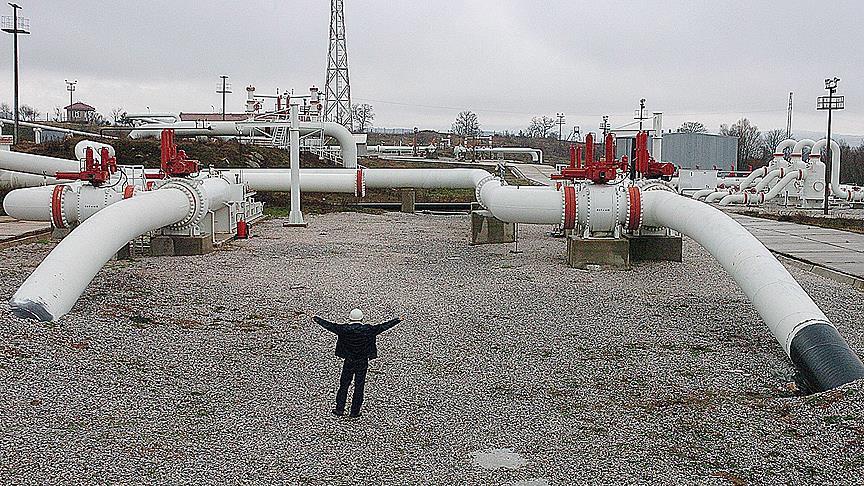- The Writer holds an MSc in Eurasian Political Economy & Energy from King’s College London and also an MA in European Studies from Sabancı University.
Natural gas consumption in Europe has increased for the third year in a row with a combination of better economic performance, increased gas power generation and because of Europe’s enduring cold temperatures. Gazprom’s gas exports have mainly met Europe’s increased gas demand. Although Gazprom has been able to meet Europe’s peak demand during the winter months with its relatively cheap gas prices, the pipeline system, which is currently operating at full capacity, looks unlikely to cover the demand, which is set only to increase.
Among the seven interconnection points that Russia has been using to deliver gas to the European gas market, only the Ukrainian Velke Kapusany delivery point can accommodate much needed spare capacity. This fact alone raises the question as to whether Russia can mend the fences with Ukraine to further strengthen its role as a major gas supplier to the European gas market in times of high gas demand.
Considering the fact that Europe’s domestic gas production has been in decline for many years, the recent recovery in gas consumption has opened a window of opportunity for Gazprom to further strengthen its already solid position as a major gas supplier to the European gas market. Gazprom looms large among the many alternative sources as a gas supplier of choice due to competitively priced gas supplies and with a pipeline network that can meet increased gas demand.
Reaching a capacity of 548 billion cubic meters () as of 2017, the European gas demand is set to rise in the years to come after continuous declines seen from 2010 to 2014. To meet peak demand, Gazprom utilized its multiple export routes for the delivery of gas to the European gas market. With over seven entry points, capacity utilization has been virtually full when peak demand was reached at its highest point on March 2, 2018, with an approximate daily flow of 714 million cubic meters per day. Gas market experts believe that capacity utilization was almost 99 percent on that particular day.
The Transparency Platform of the European Network of System Operators for Gas has highlighted that psychical flow from the six delivery points, excluding the Velke Kapusany delivery point due to strained Russia-Ukraine relations, has reached historic highs and has seen Gazprom break its gas sales records.
As the only route with spare capacity in times of peak winter demand, the Velke Kapusany and to a lesser degree, the Beregova delivery point could cover European gas demand and ease Gazprom’s heavy burden. When 99 percent capacity was used back in March 2018 in six interconnection points - namely Greifswald, Kondratki, Wysokoje, , Isaccea, and Beregova - capacity utilization at the Velke Kapusany remained as low as 62 percent in 2017 and further dropped in March to as low as 43 percent, according to the European Network of Transmission System Operators for Gas.
Europe’s colder than average winter weather in recent years has allowed Gazprom to strengthen its role as a gas supplier to the European gas market. Although the Nord Stream 2 and the Turkish Stream natural gas pipeline could ease Gazprom’s burden by delivering gas to the European market, transit routes through Ukraine are still considered vital in order to reach Eastern Europe’s gas market. After losing an arbitration case against Ukraine, Naftogaz saw the Stockholm arbitration court rule in late February that Gazprom pays $2.5 billion in compensation to Naftogaz as Gazprom defaulted on its obligations to transit gas volumes to Ukraine. Gazprom’s plan to bypass the Ukrainian route through the Nord Stream 2 and the Turkish Stream may prove to be ineffective since accommodating spare capacity in the short time may prove to be a difficult task.
Last year Ukraine received $3 billion in transit fees, but in 2019 the transit deal between Russia and Ukraine will expire. Despite Ukraine’s concerns over losing transit fees, recent developments in the European gas market suggest that Russia would not shelve Ukraine’s transit route in the coming years.
While Russia has voiced its determination to bypass Ukraine due to frequent clashes over energy, the viability of a new transit contract with Ukraine has gained weight after Gazprom experienced record high sales to its much-coveted European market.
Gazprom is already using its delivery points to transit gas at maximum capacity to the European market, and it is unlikely that Gazprom would want to lose its market share just because relations have soured with Ukraine. After the deal ends with Ukraine in 2019, Russia would most likely employ tougher rules of engagement with Ukraine in their new contracts rather than definitively ending any agreements.
One thing for certain is that Gazprom is unlikely to want to lose its European market share. To preserve this niche market, Gazprom could consider utilizing spare capacity that Ukraine is able to provide. Therefore, the role of Ukraine as a central gas transportation corridor may never be as strong as before, but it is clear that Gazprom still needs the Ukrainian gas pipeline network even after the transit deals end in 2019.
- Opinions expressed in this piece are the author’s own and do not necessarily reflect Anadolu Agency's editorial policy.


